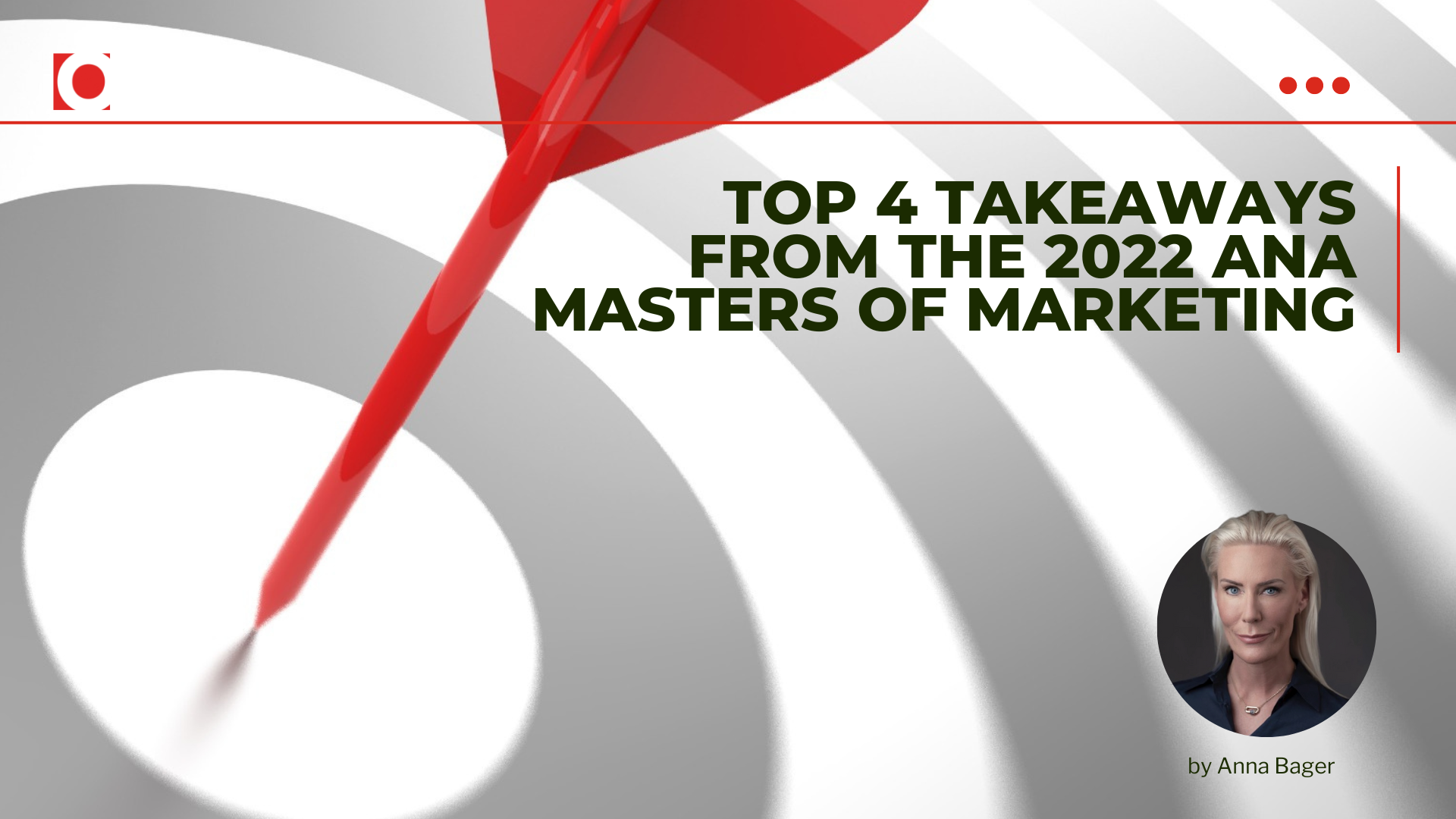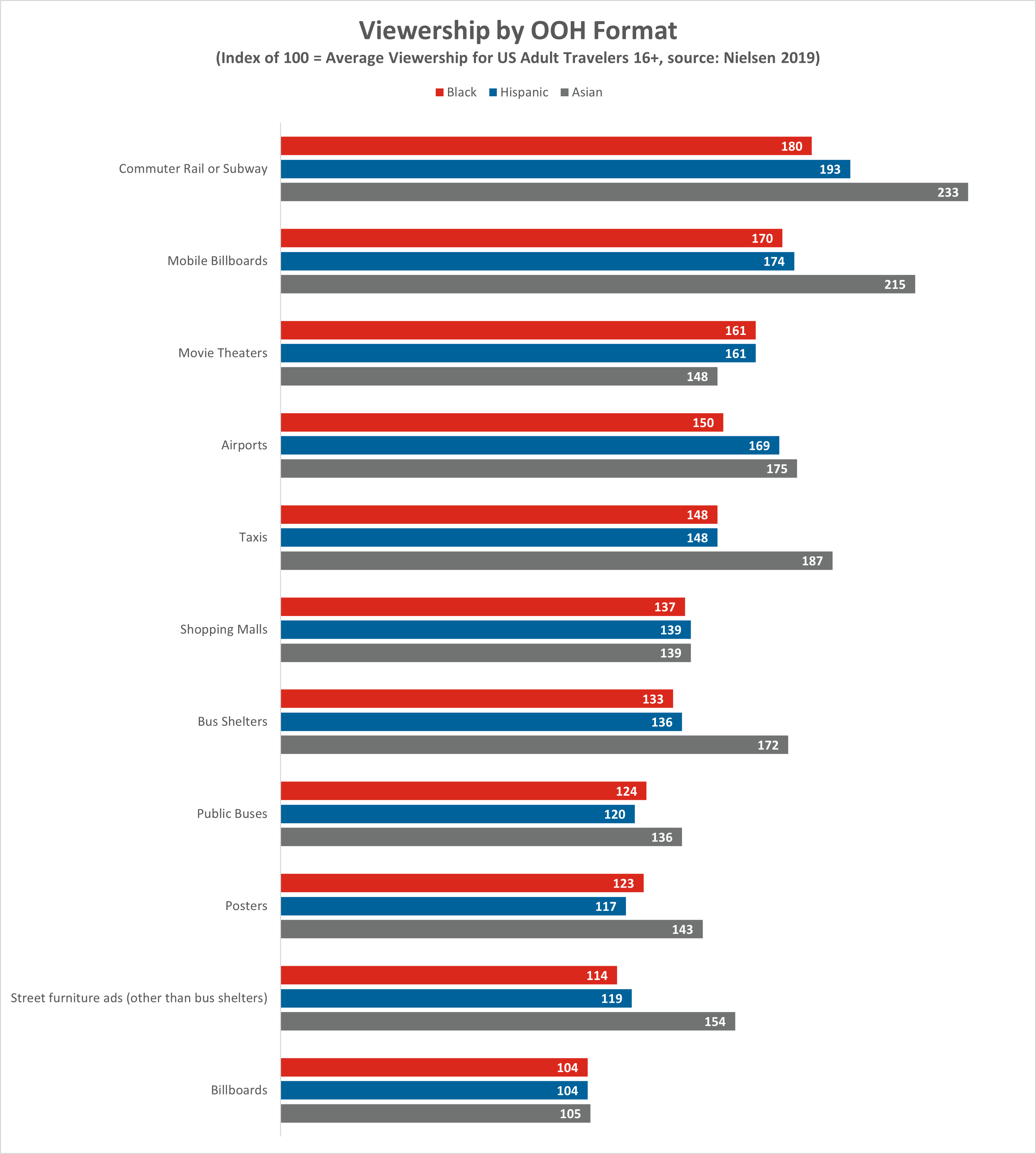
by Anna Bager, President & CEO OAAA
Every year, thousands of marketers flock to Florida for the ANA’s annual Masters of Marketing event to glean insight and inspiration from the world’s top CMOs and leading brands. This year’s theme “Force for Growth. Force for Good.” sparked important conversations around investing in the future, leading with a purpose, engaging multicultural communities, and standing out for the right reasons.
Here are my top four takeaways from the event:
1. Reaching Diverse Audiences
It’s time to build multicultural marketing into the fabric of everyday marketing . Improving sales with multicultural consumers is the single biggest growth opportunity in the market, according to P&G Chief Brand Officer Marc Pritchard, who revealed at the event that P&G aims to reach 80%-90% of multicultural consumers every single week in its media buys.
For brands looking to follow suit, OOH advertising is an ideally positioned solution that over-indexes for multicultural communities – the fastest growing segments of the U.S. population.

Our reach is wider – and more embedded – than any other channel. Beyond simply serving important messages to communities, OOH has the innate ability to create and cultivate communities.
2. Anchoring in a Sea of Goldfish
Mastercard CMO Raja Rajamannar took marketers through the upstream battle brands trek to reach and resonate with consumers. With an attention span shorter than a goldfish, consumers remember just two of the 5,000 messages they’re exposed to every day.
So how do brands and marketers break through without barging in? It takes some tact. According to OAAA-Harris poll research, 78% of consumers are annoyed with ads that interrupt their viewing, listening, and reading experiences.
Brands can organically permeate the consumer journey by tapping into out of home advertising, a medium that resonates with consumers more than ever before. According to OAAA-Harris poll research, 49% of consumers are noticing OOH ads more now compared to a year ago, and the vast majority (85%) of all viewers find OOH ads useful.
Just two in 5,000 messages stick the landing in our minds. I’d wager OOH served one (if not both) of those messages.
3. Engage and Evolve
Eos Products CMO Sogoung Kang revealed how her brand seized an opportunity through a viral post on TikTok to pivot and promote a product with more authenticity, humor, and relevance, spurring sales in a whole new product category.
Her powerful, profanity-packed presentation reminds us that engaging with consumers and evolving at the speed of culture is key in this age of constant connectivity.
You may not be able to predict if something will win the internet, but there is an art to designing a campaign that will resonate with your audience. For OOH, OAAA-Harris poll research shows that consumers are most likely to engage with creative that is colorful and vibrant (45%), clever or funny (38%), and has a simple design (36%).
Campaigns that master this mix are being rewarded with a second life online, with roughly eight in 10 social media users noticing OOH ads reposted online.
4. Creating Compelling Creative with Data
“Put the data scientists right next to the creatives,” suggested Keurig Dr Pepper CMO Andrew Springate. Harnessing data to create custom, relevant, contextual creative will maximize your impact, no matter the medium. Content is king, but I would argue context is key to capturing consumers’ attention. Nearly half (45%) of consumers – and 58% of Millennials – say contextual OOH ads are more interesting, per Harris Poll.
I’ve always said creativity is OOH’s competitive edge, and that edge can be sharpened with context and data. Beyond the contextual relevance offered by all OOH channels, DOOH has the ability to enhance that relevancy through flexibility, immediacy, and reactivity – vital tools in a post-pandemic world.
I may be biased, but the answer to many of today’s marketing challenges seems pretty obvious to me: OOH. As a one-to-many medium, OOH offers contextual relevance and incredible impact in an authentic, complementary way, naturally encountering consumers when they are most likely to act.
Published: November 9, 2022